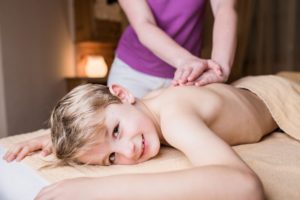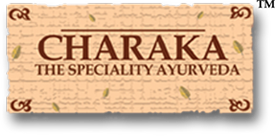
There is no cure for CP, but treatment, therapy, special equipment, and, in some cases, surgery can help a child who is living with the condition.
Cerebral palsy is one of the most common congenital (existing before birth or at birth) disorders of childhood.
The three types of CP are:
- Spastic cerebral palsy — causes stiffness and movement difficulties
- Athetoid cerebral palsy — leads to involuntary and uncontrolled movements
- Ataxic cerebral palsy — causes a disturbed sense of balance and depth perception
Cerebral palsy affects muscle control and coordination, so even simple movements like standing still are difficult. Other vital functions that also involve motor skills and muscles such as breathing, bladder and bowel control, eating, and learning may also be affected when a child has CP. Cerebral palsy does not get worse over time.
Kids with CP have varying degrees of physical disability. Some have only mild impairment, while others are severely affected. This depends on the extent of the damage to the brain. For example, brain damage can be very limited, affecting only the part of the brain that controls walking, or can be much more extensive, affecting muscle control of the entire body.
The brain damage that causes CP can also affect other brain functions, and can lead to other medical issues. Associated medical problems may include visual impairment or blindness, hearing loss, food aspiration (the sucking of food or fluid into the lungs), gastroesophageal reflux (spitting up), speech problems, drooling, tooth decay, sleep disorders, osteoporosis (weak, brittle bones), and behavior problems.
Seizures, speech and communication problems and mental retardation are more common among kids with the most severe forms of CP. Many have problems that may require ongoing therapy and devices such as braces or wheelchairs.
The exact causes of most cases of CP are unknown, but many are the result of problems during pregnancy in which the brain is either damaged or doesn’t develop normally. This can be due to infections, maternal health problems, a genetic disorder, or something else that interferes with normal brain development. Problems during labor and delivery can cause CP in some cases.
Premature babies particularly those who weigh less than 1,500 grams (3.3 pounds) have a higher risk of CP than babies that are carried full-term, as are other low birth weight babies and multiple births, such as twins and triplets.
Brain damage in infancy or early childhood can also lead to CP. A baby or toddler might suffer this damage because of lead poisoning, bacterial meningitis, malnutrition, being shaken as an infant (shaken baby syndrome), or being in a car accident while not properly restrained.
Signs and symptoms can vary greatly. Movement and coordination problems associated with cerebral palsy may include:
- Variations in muscle tone, such as being either too stiff or too floppy
- Stiff muscles and exaggerated reflexes (spasticity)
- Stiff muscles with normal reflexes (rigidity)
- Lack of muscle coordination (ataxia)
- Tremors or involuntary movements
- Slow, writhing movements (athetosis)
- Delays in reaching motor skills milestones, such as pushing up on arms, sitting up alone or crawling
- Favoring one side of the body, such as reaching with only one hand or dragging a leg while crawling
- Difficulty walking, such as walking on toes, a crouched gait, a scissors-like gait with knees crossing or a wide gait
- Excessive drooling or problems with swallowing
- Difficulty with sucking or eating
- Delays in speech development or difficulty speaking
- Difficulty with precise motions, such as picking up a crayon or spoon
The disability associated with cerebral palsy may be limited primarily to one limb or one side of the body, or it may affect the whole body. The brain disorder causing cerebral palsy doesn’t change with time, so the symptoms usually don’t worsen with age, although the shortening of muscles and muscle rigidity may worsen if not treated aggressively.
Other neurological problems
Brain abnormalities associated with cerebral palsy also may contribute to other neurological problems. People with cerebral palsy may also have:
- Difficulty with vision and hearing
- Intellectual disabilities
- Seizures
- Abnormal touch or pain perceptions
- Oral diseases
- Mental health (psychiatric) conditions
- Urinary incontinence
CP may be diagnosed very early in an infant known to be at risk for developing the condition because of premature birth or other health problems. Doctors, such as pediatricians and developmental and neurological specialists, usually follow these kids closely from birth so that they can identify and address any developmental delays or problems with muscle function that might indicate CP.
In a baby carried to term with no other obvious risk factors for CP, it may be difficult to diagnose the disorder in the first year of life. Often doctors aren’t able to diagnose CP until they see a delay in normal developmental milestones (such as reaching for toys by 4 months or sitting up by 7 months), which can be a sign of CP.
Abnormal muscle tone, poorly coordinated movements, and the persistence of infant reflexes beyond the age at which they are expected to disappear also can be signs. If these developmental milestones are only mildly delayed, the diagnosis of CP may not be made until the child is a toddler.
Once diagnosed with cerebral palsy, further diagnostic tests are optional. Neuroimaging with CT or MRI is warranted when the cause of cerebral palsy has not been established. MRI is preferred over CT due to diagnostic yield and safety. When abnormal, the neuroimaging study can suggest the timing of the initial damage.
If the child has seizures, an electroencephalogram (EEG) will be done to determine if he or she has epilepsy, which often occurs in people with cerebral palsy.
Muscle weakness, muscle spasticity and coordination problems can contribute to a number of complications either during childhood or later during adulthood, including:
- Contracture – Contracture is the shortening of muscle tissue due to severe tightening of the muscle (spasticity) – Contracture can inhibit bone growth, cause bones to bend, and result in joint deformities, dislocation or partial dislocation.
- Malnutrition – Swallowing or feeding problems can make it difficult for someone who has cerebral palsy, particularly an infant, to get enough nutrition. This may cause impaired growth and weaker bones. Your child may need a feeding tube for adequate nutrition.
- Mental health conditions – People with cerebral palsy may have mental health (psychiatric) conditions, such as depression. Social isolation and the challenges of coping with disabilities can contribute to depression.
- Lung disease – People with cerebral palsy may develop lung disease and breathing disorders.
- Neurological conditions – People with cerebral palsy may be more likely to develop movement disorders or worsened neurological symptoms over time.
- Osteoarthritis – Pressure on joints or abnormal alignment of joints from muscle spasticity may result in the early development of painful degenerative bone disease (osteoarthritis).
Ayurveda Management

Ayurveda has a separate branch of clinical specialization concerning child healthcare known as Kaumarabhrutya.
Cerebral palsy cannot be correlated with any single disease or condition mentioned in Ayurveda, as it is a multi-factorial disease. Classical signs and symptoms of CP will fit into criteria of Vata vyadhi spectrum(Vata predominant disease). Hence Vata vyadhi chikitsa will prove beneficial.
Overall goal of treatment is to help the individual with cerebral palsy reach his or her greatest potential physically, mentally, and socially. It is to improve the quality of life by establishing optimal independence.
Treatment at CHARAKA for CP involves intensive Panchakarma therapy program along with researched oral medicines. Therapies like Abhyanga swedam, Nasyam, Pichu, Shirodhara, Pizhichil, Navara or mamsakizhi, Vasti are done based on the presentation and suitablity. Duration of therapy could range from 3 weeks to 5 weeks. Oral medicines will be continued for 2 - 3 years.
Repetition of therapies in small courses either individual or in combination intermittently will yield great benefit and stands as long term support for CP child.

